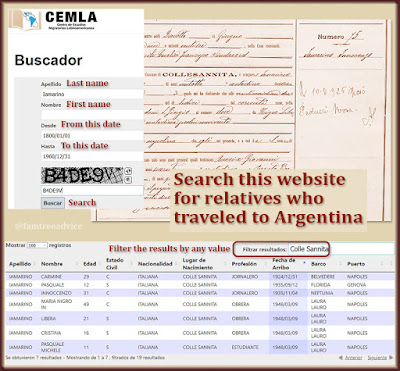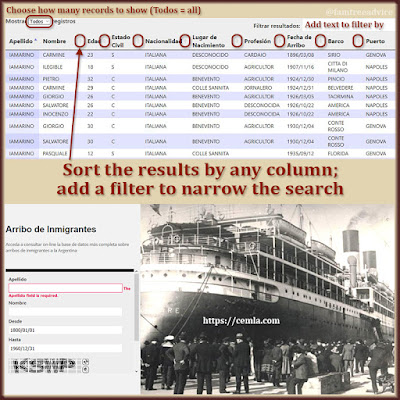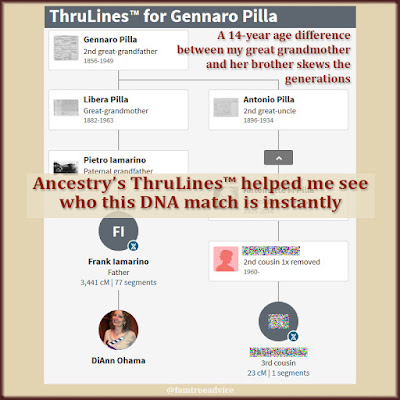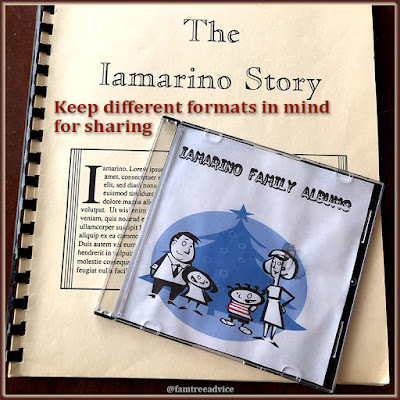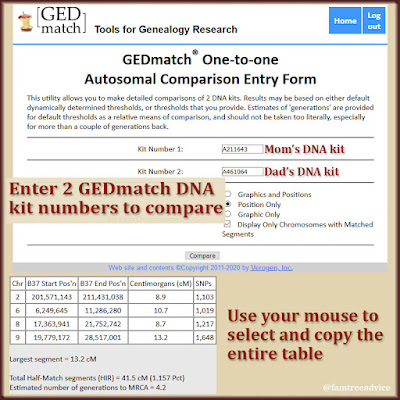Keep track of potential finds as-you-go with this free research log.
Back in the olden days (before 2017), the vital records from my grandfather's hometown were not online. I had to spend long hours in my nearest Family History Center to view the documents on microfilm.
At first I was entering likely relatives right into Family Tree Maker on the laptop I brought with me. That took way too much time. I needed to capture as many vital records as possible or else I'd be visiting that darkened room forever!
I switched to a super-efficient method instead. I entered a shorthand version of the information in every vital record into a text file on my computer. Then I could figure out where everyone belonged when I got home. (My "shorthand" was a format like this for birth records: "Maria Bianco b 12 Jan 1810 to Francesco di Giovanni and Angela Leone bap next.")
 |
| The sight of this notebook full of genealogy notes makes my hand cramp up. |
Now I need a new system for logging the research I do online. Most of the time I'm doing very focused research. "Find this person's birth record. Find his parents' marriage and their birth records." When concentrating on one person, I can collect the documents one at a time and add them to Family Tree Maker. I prefer to do it that way and complete my whole process in one sitting:
- Save, crop, and rename the image file
- Add a title and description to the image file's properties
- Add the image file and all its facts to the person in Family Tree Maker
- Create the source citation and apply it to all the facts derived from that image file
- Make note of the document in my Document Tracker spreadsheet
- File away the image file
But if I'm researching for a client, or going off on a tangent on behalf of a cousin, I need a better way to track my findings.
This month I was researching a family from Perugia, Italy. The Family Search website has a limited range of records available for the town. I committed to combing through them all to figure out who belonged to this particular family.
I was searching for a short list of last names. I copied and pasted names, dates, and URLs for every record I found into a text file. I had problems with this method, like overlooking family members in the long list. I could imagine a lot of benefits I wanted to add to this research process.
I turned to an Excel spreadsheet for the solution. How did I not think of this from the start? I practically live in a spreadsheet. Well, spreadsheets and text-file lists.
I converted all my findings to a spreadsheet, using a careful cut and paste process. I discovered 2 relatives I'd overlooked before. A spreadsheet is infinitely better than a text file. And light-years better than handwritten notes. I can sort the information by any column and click the links I saved to go straight to the vital record online.
 |
| With a research log like this, you'll never have to worry about retracing your steps. |
I decided to turn this test case into a research log template. From now on, when I'm researching someone else's family, I'll enter everything I find into a copy of this spreadsheet.
I can capture the important information quickly, and figure out who belongs in the family tree later.
Of course I'm going to share this research log template with you. Download your copy from my Dropbox folder. Remember that you can make any changes you may need. You can add or edit columns…whatever makes sense to you. Never lose track of your past discoveries again. Note: Need this in Google Sheets? Here's your link.
Want some more free research aids?
